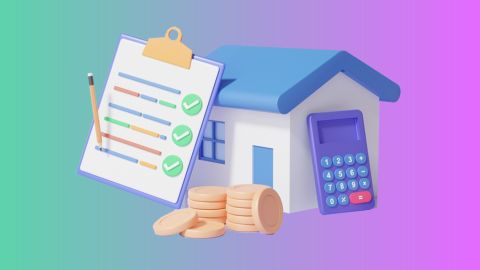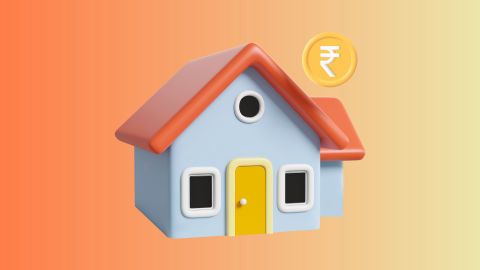In the realm of property ownership, understanding various classifications and certificates is crucial. One such classification, often confusing for many, is the 'B Khata'. This term frequently pops up when dealing with property transactions in Bangalore. To truly grasp the 'B Khata meaning' and its implications, one must delve into its origins, significance, and the steps required to manage properties under this classification.
Properties classified under 'B Khata' often face numerous challenges, particularly in securing loans or selling. However, solutions like Bajaj Finserv Loan Against Property can help mitigate these issues by offering financial support for such classifications. Through this article, we aim to demystify the concept of 'B Khata', highlighting its importance, the differences from 'A Khata', and the process of converting 'B Khata' to 'A Khata'. If funding is a roadblock to upgrading your 'B Khata' property, consider a loan against property from Bajaj Finance. This loan helps cover regularisation costs, enabling smoother transitions to 'A Khata'. With financial support at hand, you can take confident steps toward compliance and improved property valuation. Enjoy lower EMIs starting from Rs. 750/lakh* and longer repayment tenures.
By understanding these elements, property owners can make informed decisions and navigate the complexities of property ownership more effectively.
What is ‘B Khata’?
'B Khata' refers to a property classification in Bangalore, India. It stems from the term ‘Khata’, which is essentially an account or record maintained by the Bruhat Bengaluru Mahanagara Palike (BBMP). This record includes details about a property’s size, location, and ownership, and it is vital for property tax assessment and other civic services.
The 'B Khata' emerged as a categorisation for properties that do not comply with the building by-laws or have deviations from approved plans. Such properties are listed in a separate register, distinct from the 'A Khata' properties, which are fully compliant and legally sanctioned.
Struggling to secure loans for your 'B Khata' property? Bajaj Finance provides loan against property solutions to help you handle your expenses—all while retaining ownership. Use the value of your property to meet diverse financial goals with ease. With a Bajaj Finserv Loan Against Property, you can unlock high-value funding at competitive interest rates. Whether it is for medical emergencies, business growth, or personal goals, your property empowers you to access the resources you need with ease. Don’t wait—Get a loan against property of up to Rs. 10.50 crore with simple application process.
Importance of ‘B Khata’
- Property tax payment: Enables property owners to pay taxes even if their property is not fully compliant.
- Basic amenities access: Provides access to basic amenities like water and electricity.
- Official record: Acts as an official record, which can be crucial for any legal processes or transactions.
- Transition opportunity: Offers a pathway to upgrade to 'A Khata' through regularisation.
Why is ‘B Khata Property Tax’ different from ‘A Khata Property Tax’?
| Feature | B Khata | A Khata |
| Compliance | Non-compliant with building by-laws | Fully compliant with building by-laws |
| Property tax payment | Allowed but under a separate register | Regular and recognised by BBMP |
| Loan eligibility | Limited options | Wide range of loan options are available |
| Legal validity | Limited and requires regularisation | Fully valid and legally recognised |
| Property transactions | Restricted and challenging | Smooth and hassle-free |
How to obtain a ‘B Khata’ certificate?
Obtaining a 'B Khata' certificate involves a series of steps. Firstly, the property owner must submit an application to the BBMP. This application should include detailed property documents and evidence of property tax payments. The BBMP then verifies the documents and conducts an inspection of the property. If the property meets the necessary criteria, the BBMP issues the 'B Khata' certificate. This process ensures that the property is officially recorded, enabling the owner to pay taxes and access basic services.
Financial tip: Unlock the financial support you need with a loan against property. Bajaj Finance provides flexible solutions to help property owners handle upgrades, resolve legal challenges, or achieve personal financial goals—all while retaining ownership. Take charge of your property’s future today—apply now and turn obstacles into opportunities. Get a loan of up to Rs. 10.50 crore with the option of interest-only EMIs during the initial tenure*.
Documents required for ‘B Khata’:
- Sale deed.
- Tax paid receipts.
- Title deed.
- Encumbrance certificate.
- Approved building plan.
- Conversion certificate (if applicable).
Disadvantages of having ‘B Khata’:
- Loan restrictions: Difficulty in securing loans due to non-compliance.
- Limited legality: Properties face legal challenges and limited recognition.
- Transaction issues: Complicated property sale and transfer processes.
- Regularisation costs: Potential high costs for converting to 'A Khata'.
What are the common issues faced with ‘B Khata’ properties?
- Loan approval delays: Lengthy processes for loan approvals.
- Higher interest rates: Increased interest rates due to perceived risk.
- Market value impact: Reduced property market value.
- Legal disputes: Frequent legal disputes and challenges.
Process of converting ‘B Khata’ to ‘A Khata’
Converting a 'B Khata' to 'A Khata' involves regularising the property with the BBMP. This process includes clearing any outstanding dues, adhering to building by-laws, and paying the conversion fee. Property owners must submit all relevant documents, including tax receipts, title deeds, and the approved building plan. Upon successful verification, the BBMP issues an 'A Khata' certificate, granting full legal recognition to the property.
Legal implications of not upgrading to ‘A Khata’
Failing to upgrade from 'B Khata' to 'A Khata' can lead to several legal complications. Properties under 'B Khata' face restricted legality, which can hinder any legal transactions or ownership transfers. Additionally, the property may be subjected to penalties and could even face demolition if deemed non-compliant with the current regulations. Therefore, upgrading to 'A Khata' is crucial for ensuring legal safety and smooth property management.
Did you know that sometimes even with a 'B Khata' property, you can unlock financial potential? Loan Against Property offers a practical solution, allowing property owners to access funds without selling their property. Whether it is for regularisation, upgrades, or other financial needs, this option helps navigate the hurdles 'B Khata' properties face. By using your property as collateral, you can unlock access to large funds of up to Rs. 10.50 crore—it is a smart way to manage your finances with ease! Get funds within 72 hours* of approval*.
Conclusion
Understanding the 'B Khata meaning' and its implications is essential for property owners in Bangalore. While owning a 'B Khata' property comes with its set of challenges, solutions like Bajaj Finserv Loan Against Property can provide the necessary financial support. By obtaining the correct certifications and upgrading to 'A Khata', property owners can enjoy legal recognition and smoother transactions. For those struggling with 'B Khata' properties, exploring loan options can be a practical step towards better management and regularisation. Always ensure to check the eligibility and documents required before applying for any financial assistance.




